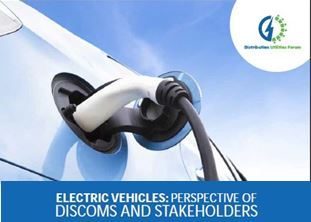The Discom Perspective on EV’s

It is no secret that an EV charging network goes hand in hand with the spread of EV’s in every market. In fact, some will argue that it usually precedes a big jump in EV adoption, as a visible, efficient charging network can really work wonders to nudge people to shift. India is no different, with both the government, and EV manufacturers pushing hard to build and find ways to establish a credible network for potential users.
While the government has pushed energy majors like oil marketing firms, and discoms themselves to establish EV charging stations, other private firms have pushed for options ranging from proprietary networks for their users to battery swapping stations.
Policies at state level have also been a work in progress, with power prices at EV charging stations ranging between Rs 4 to Rs 7 for now. The only saving grace being that governments seem to be pricing these below peak commercial and industrial rates in these states. The report surmises that a tariff over Rs 8.50 to Rs 9 per unit of power will effectively make EV’s lose their lower operational cost advantage over ICE vehicles.
A report by TERI throws light on this emerging sector, and ends with recommendations built out from the discom perspective primarily.
Discoms are key stakeholders in the exercise, as an EVCI (Electric Vehicles Charging Infrastructure) impacts them the most . Be it the quality of power, the issue of impact on grid stability, or possible RPO (Renewable Purchase Obligations) guidelines, or even the not so simple issue of location of EVCI, discoms face an impact. For instance, the most obvious option, to locate EVCI next to or inside existing fuel stations, will need permissions under the Indian explosives Act 1884, due to the location of high voltage cables required.
Key recommendations include a push by discoms to use land at or near their existing sub stations for EVCI. Including through partnerships with private sector players. Using Time of Day/Time of Use Energy metering (ToU/ToD) options to push battery swapping stations to charge appropriately, or incentivise demand shifts by pricing accordingly to manage overall grid stability.
The report also makes a case for allowing EVCI aggregators to purchase power from open access without any limit (currently 1MW) without cross subsidy surcharge and allow power banking/net metering of RE based generation to promote reduced tariffs for EV charging.
It urges EV penetration by different kinds of tariff structure for residential, commercial and public charging stations. Until the EV penetration reaches to 10% of total vehicles in India or till 2021-22, energy-based tariff (or subsidized) should be there for residential users. For commercial category there might be two-part tariff (capacity and energy-based tariff ) which will be helpful to encourage
EV users. Similarly, for charging stations, introducing ToD with two-part tariff structure to minimize potential impact on grid .
The report also uses existing operating models for scenario building, besides taking a hard look at the financial and related operational aspects of the EVCI build out framework for discoms. The full report can be viewed here.



